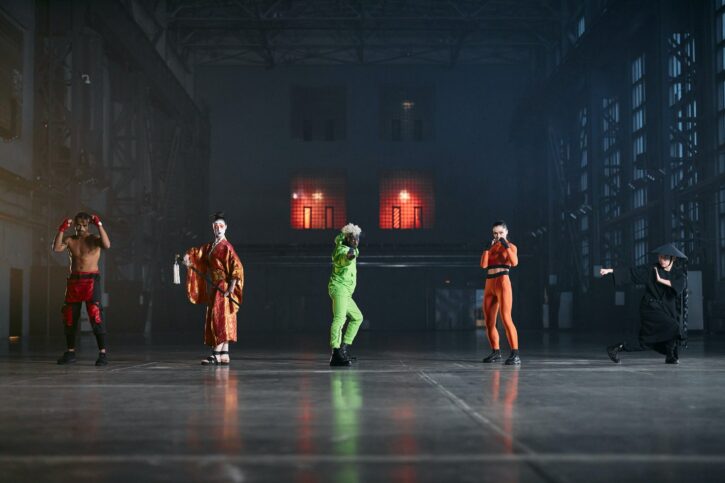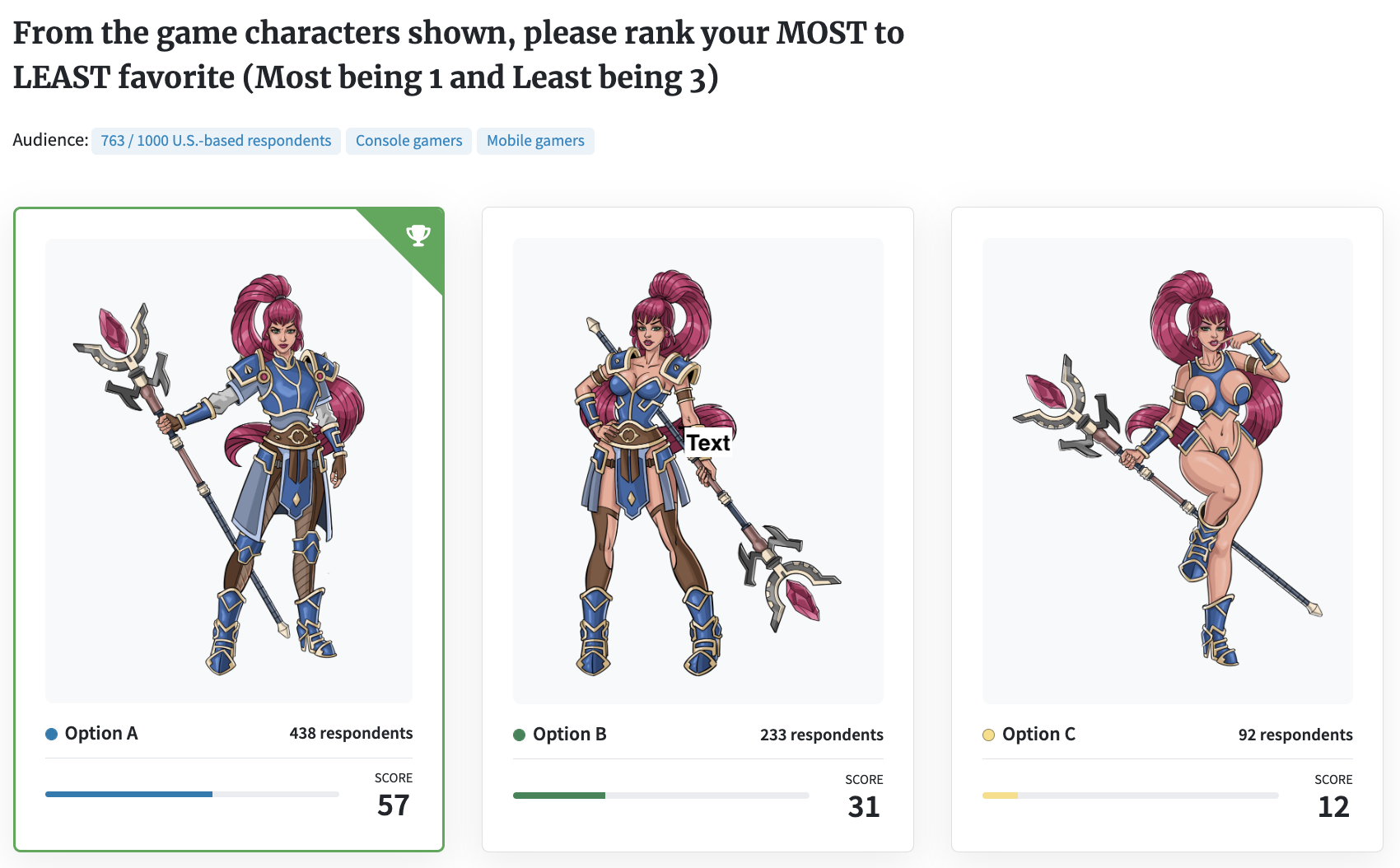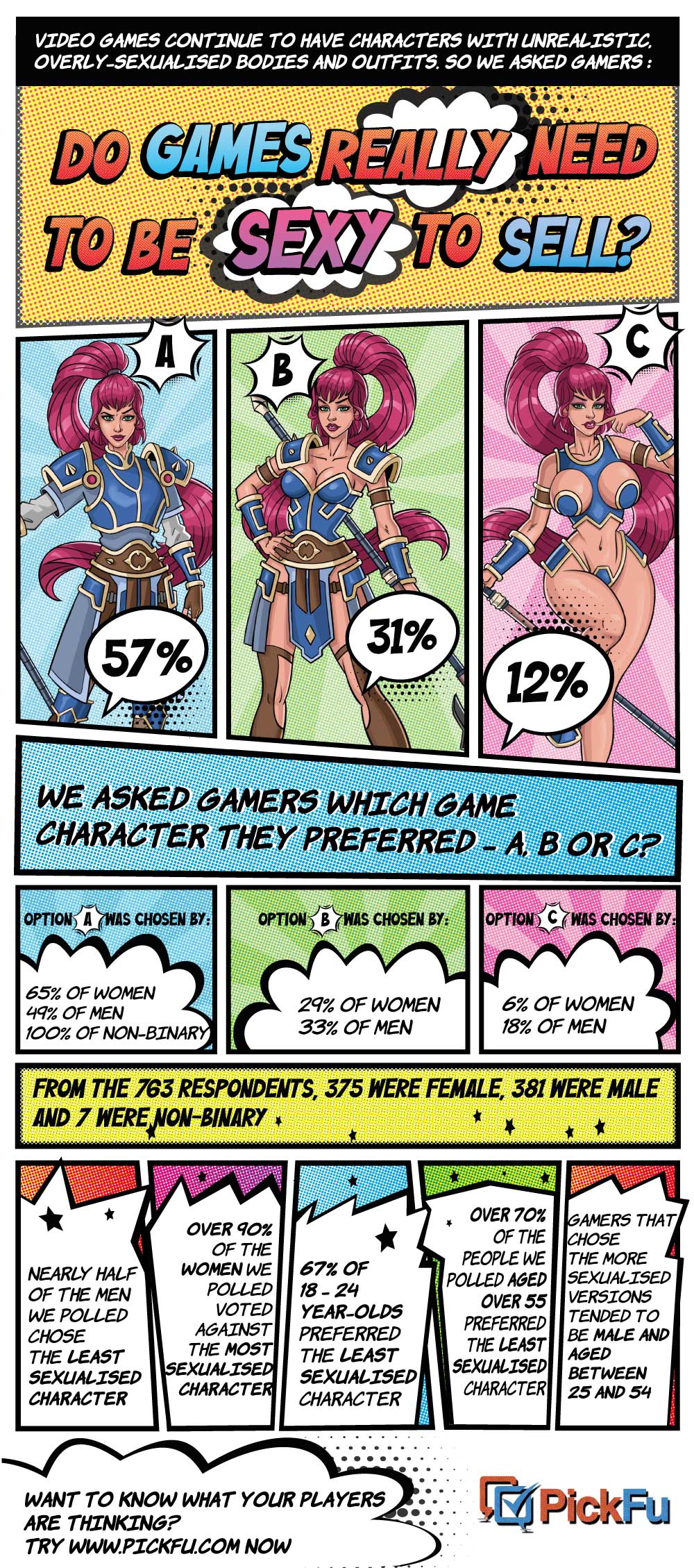Nearly half of U.S. gamers are female. Still, people often assume the gaming world is overwhelmingly a male domain.
The portrayal of women in games probably feeds this misconception.
It’s common for female characters to be drawn with exaggerated figures and minimal clothing and sidelined in storylines, filling roles like sexy sidekick or damsel in distress.
But do characters in games really need to be sexualized to attract players?
About this poll
PickFu surveyed 763 mobile and console gamers to find out if sexualized character design is a selling point for them.
Of those polled, 381 were male gamers, 375 were female, and seven identified as non-binary.
Each was shown three design variations for a female character.
Option A was the least sexualized, with the character wearing full armor and confidently gripping a weapon. The second, Option B, was slightly more revealing. Option C was overly sexualized, showing a nearly naked character.
Respondents were asked to rank the designs from most to least favorite.
Key findings: Sexualization in gaming character design
Option A, the armored character, was the clear winner with 57% of the vote.
Option B was second with a score of 31.
Option C, the most sexualized of the three designs, garnered only 12%.
“[Option C] is a joke, right? The woman’s dimensions and outfit are ridiculous.” — Male, 35-44, married, $61-100k
Here’s a further breakdown of the poll results:
- Nearly half of male gamers (48.8%) and 93.8% of female gamers voted for Option A, the least sexualized option.
- Men were three times more likely than women to favor Option C, the most sexualized design.
- Education was directly linked to preferences. More than two-thirds (66.7%) of respondents with less than a high-school education voted for the most sexualized Option C compared with those with an associate degree (21.7%), bachelor’s degree (12.9%), or graduate degree (3.6%).
- Single people were nearly twice as likely to vote for the most sexualized design than married people.
- The 18-24, 55-64, and 65+ age groups were most likely to vote for the least sexualized design.
What respondents said
“Option C is barely wearing any clothes. Reminds me of how misogynistic the gaming industry can be. Only Option A is wearing proper armor.” — Female, 25-34, single, $101k+
“Option A portrays the female character the most realistically, with B following behind it. C is grotesquely unrealistic.” — Male, 35-44, single, $0-30k
“Option C is misogynistic and unrealistic, Option B is less so, Option A is most realistic and appropriate.” — Female, 25-34, married, $31-60k
“She is clearly some kind of warrior, so she needs an appropriate outfit to do battle in. Only A makes her look like a woman who could win a fight because she is armored up.” — Male, 35-44, married, $101k+
“Option A is best because she is actually dressed like a warrior instead of a porn star. Option C is downright offensive, it is completely inappropriate for a game setting.” — Female, 25-34, married, $61-100k
Use PickFu to get the gamer’s perspective. Sign up for free.
Key takeaway
As players contend with toxic behavior in gaming, video games continue to feature characters with unrealistic, overly sexualized bodies and outfits.
But as our poll and respondents’ comments make clear, it’s an unnecessary and undesirable trend whose days might be numbered.
There has been a conscious effort in recent years by game developers and publishers, including industry giants like Nintendo, to move away from sexualized depictions of female characters.
After various iterations of “Tomb Raider”, the iconic female protagonist Lara Croft has gone from “schoolboy fantasy” to, finally, a character with a “realistic eye-to-face ratio as well as authentic body proportions.”
The actress Alicia Vikander, who portrayed Lara Croft in the 2018 film, said it best in an interview: “She has all the fierce, tough, curious, intelligent traits.”
Global consumer brands are getting on board as well.
The latest high-profile example? Dove’s Real Virtual Beauty project, which includes online training for developers and artists around female representation and diversity in video game characters.
Use PickFu to get player feedback on your mobile game
Game developers use PickFu to test and get feedback at every stage of the development cycle, including ideation and character development.
Want to know what players think about your game concept, character, or design? Create your free PickFu account and start polling.




